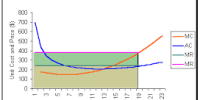The present paper overviews urbanization and migration process in Asian countries at macro level since 1950s, including the projections made till 2030. It questions the thesis of southward movement of urbanisation and that of urban explosion in Asia. Increased unaffordability of urban space and basic amenities, negative policy perspective towards migration and various rural development pogrammes designed to discourage migration are responsible for this exclusionary urban growth and a distinct decline in urban rural growth differential, with the major exception of China. The changing structure of urban population across different size categories reveals a shift of growth dynamics from large to second order cities and stagnation of small towns. The pace of urbanization has been modest to high in select countries in Asia, not because of their level of economic growth but its composition and labour intensity of rapidly growing informal sectors. Several countries have launched programmes for improving governance and infrastructural facilities in a few large cities, attracting private investors from within as well as outside the country. These have pushed out squatter settlements, informal sector businesses along with a large number of pollutant industries to a few pockets and peripheries of the cities. The income level and quality of basic amenities in these cities, as a result, have gone up but that has been associated with increased intra-city disparity and creation of degenerated periphery.
Migration and Urbanization
















